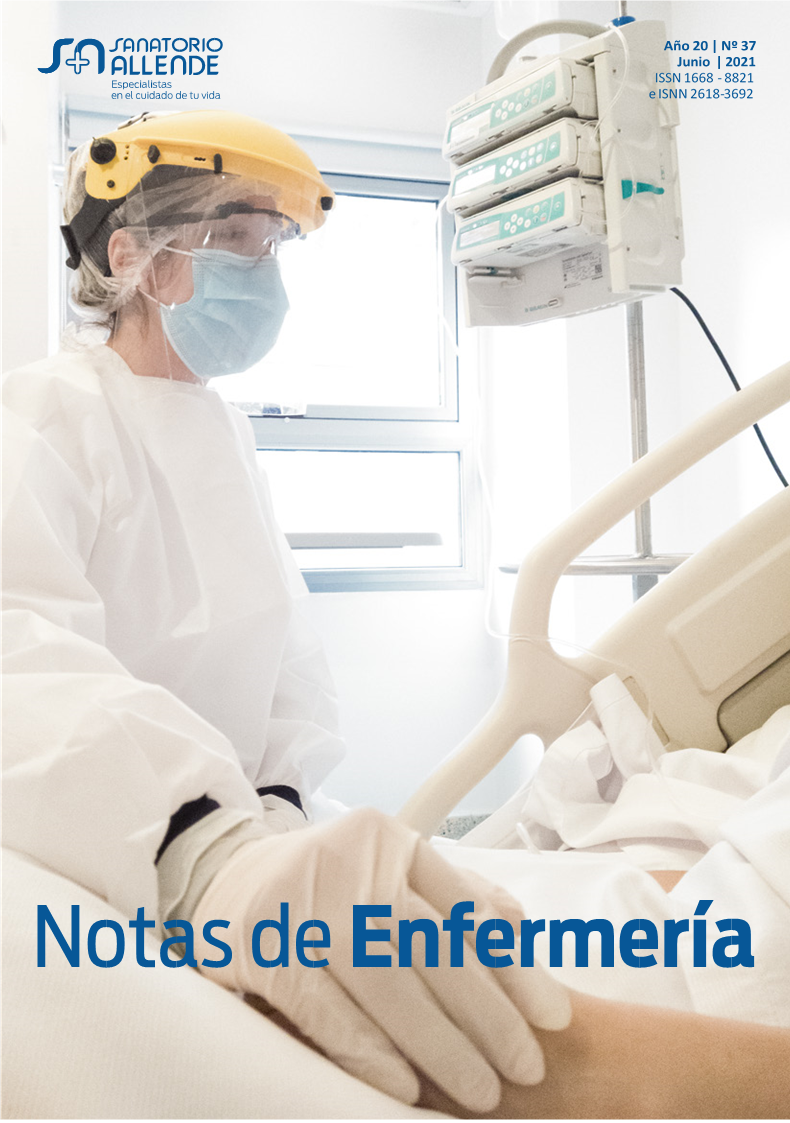Pain assessment for the patient in the adult therapy unit
DOI:
https://doi.org/10.59843/2618-3692.v20.n37.33364Keywords:
pain, critical patient, neurological scale, pain scaleAbstract
the retrospective historical view of pain positions us in front of its coexistence with humanity. Each culture had its own way of dealing with it, giving it meaning, and taking its relief measures. Science, from its place, has developed concepts explaining reasons and origins of its presence. The medical sciences in their desire to alleviate people's ailments, developed pain assessment scales. In intensive therapies, where the patient's state of consciousness varies according to the need that occurs in order to resolve their pathology or the reason for admission to this service, it is necessary to assess their neurological status in order to accurately determine the scale of pain assessment that provides the most timely result according to the precise moment. Due to the care carried out by the nursing professional with the internees, it is he who stays with them the longest; being able to cultivate a deeper interpersonal relationship, and due to which, not only collaborate in the relief of pain, but also, if necessary, help it find meaning to it, in the words of Travelbee. In order to implement this idea, the objective of this protocol, the following objective is defined: "Agree and implement the adequate and continuous use of pain scales, in the adult intensive care patient, according to their degree of consciousness, in order to reduce pain during your hospital stay."
Downloads
References
1. García Ruiz, F. Editado por Andreas KopfandNilesh B. Patel. Guías para el manejo del dolor en condiciones de bajos recurso. Asociación Internacional para el estudio del dolor. Washington, D.C. EEUU. 2010 Traducción Dr. Covarrubias Gómez, A..
2. López López,C., Murillo Pérez,M.; Torrente Vela, S, Cornejo Bauer, C.García, M, Orejana Martín, Morales Sánchez, C., AltedLópez,E. Aplicación de la Escala de conductas indicadoras de dolor (ESCID). [Internet] [octubre de 2013- consultado: junio 2020]Hospital Universitario. España. 2013. Disponible en: http://dx.doi.org/10.1016/j.enfie.2013.07003
3.Yang, Q., Xu H. Zang M:, Wang Y. Li, D. Alteraciones de conectividad volumétrica y funcional en pacientes con enfermedad crónica. Dolor espondilótico cervical. Neuroradiología. DOi: 10.1007/s==234-020-02413-z. Abril. 2020
4.Youssef,A:M:mAzquetaGavaldonM.,Silva K., Barakat N., LópezN, Mahmud F., Lebel A., Sethna N.F., Zurakowski D:,Simons L.E., raft E., Borsook D. Circuitos cerebrales cambiantes en la cornicidad del dolor. [julio 2019- consultado: julio 2020] HumBrainMapp. Doi:101002/hbm. 2470.WileyPeriodicals, Inc. Indexado para MEDLINE. 2019
5. Oriuci Y., Tsuji O., Komaki Y., Fujiyoshi K., ikisima, .,Konomi T., Nagosi, N, Watanabe, K., Matsumoto M., Horiuchi, K., Nakamura, M. Cambios estructurales espinal. 58(4): 467-475.Doi: 10.1038/s41393-019-0391-0. Epub. [dic. 2019- consultado julio 2020]
6.A. Gil, B. Layunta y L. Íñiguez. Dolor crónico y construccionismo. Universidad Oberta de Cataluña. Boletín de Psicología, No. 84, Julio 2005, 23-39
7.Idem 4
8.Devlin, J; Pharm, D; Skrobik, Y. and col. Traducción y adaptación Carini, F. and col. Guías de práctica clínica para el manejo del dolor, la agitación/sedación, el delirium, la inmovilidad y las alteraciones del sueño en pacientes adultos en UCI. [Internet] SATI. Disponible en: https://journals.lww.com/ccmjournal/Fulltext/2018/09000/Clinical_Practice_Guidelines_for_the_Prevention.29.aspx
9.Idem 5
10. Latorre Marco, I.; Solís Muñoz, M.; Falero Ruiz, T.; Larrasuitu Sánchez, A.; Romay Pérez,A.; Millán Sntos, I. y resto del grupo del proyecto de Investigación ESCID. Validación de la Escala de Conductas Indicadoras de Dolor para valorar el dolor en pacientes críticos, no comunicativos y sometidos a ventilación mecánica: resultados del proyecto ESCID. [Internet]. Enferm Intensiva. 2011; 22(1): 3-12. España. Disponible en: www.elsevier.es/ei
11Bejarano, D. Escalas de valoración neurológica.3° Ciclo. Módulo 2. Sept. 2018 PROECRI. SATI. Editorial
PANAMERICANA.
12.Idem10
13.Bejarano, A.M. Dolor, Agitación y Delirio PROECRI. Programa de Actualización en Enfermería en Cuidados Críticos. 4°Ciclo. Módulo 1. Junio de 2019. SATI. Editorial Médica PANAMERICANA.
14.Idem
15.Yan, Wendy DNP, CRNA; Morgan, Brett T. DNP, CRNA; Berry, Peter MSN, RN, CNL, CCRN; Matthys, Mary K. BSN, RN, CCRN; Thompson, Julie A. PhD; Smallheer, Benjamin A. PhD, RN, ACNP-BC, FNP-BC, CCRN, CNE. Un proyecto de mejora de la calidad para aumentar la adherencia a un protocolo de dolor, agitacióny delirio en la unidad de cuidados intensivos Dimensiones de la Enfermería de Cuidados Críticos: mayo/junio de 2019 - Volumen 38 - Número 3 - p 174-181
16.MarrinerTomey. Modelos y Teorías de enfermería. HarcoutBrace. Madrid, España. 1999
17.Hofstadt R.C.; Quiles, M.Y. Técnicas de la comunicación en enfermería. España: Generalitat Valenciana; Consejería de Sanidad. 1ed.2006
18. Chamorro, C.; Romera, M.A. Dolor y miedo en la UCI. [Internet] [2015- consultado julio2020]Medicina Intensiva. Elsevier. Disponible en: https://www.sciencedirect.com/science/article/abs/pii/S0210569115001163?-via%3Dihub
19. Caballero, J.; García Sánchez, M. ; Palencia Herrejón, E. y col. Sobredosificación Zero como herramienta de confort, seguridad y gestión en las unidades de cuidados intensivos. [Internet] [disponible desde nov. 2019-consultado julio 2020]. SEMICYUC Y Elsevier España. 2019. Disponible en: https://www.sciencedirect.com/science/article/abs/pii/S0210569119302104?via%3Dihub
20. Robaina,F.J. ¡Por qué las unidades del Dolor deben ser multidisciplinarias? EDITORIAL. Rev. Soc. Esp. Dolor. 12:137140, 2005.
Downloads
Published
Issue
Section
License
Copyright (c) 2021 Sanatorio Allende

This work is licensed under a Creative Commons Attribution-NonCommercial 4.0 International License.
Those authors who have published with this journal, accept the following terms:
- Attribution — You must give appropriate credit, provide a link to the license, and indicate if changes were made. You may do so in any reasonable manner, but not in any way that suggests the licensor endorses you or your use.
- NonCommercial — You may not use the material for commercial purposes.

